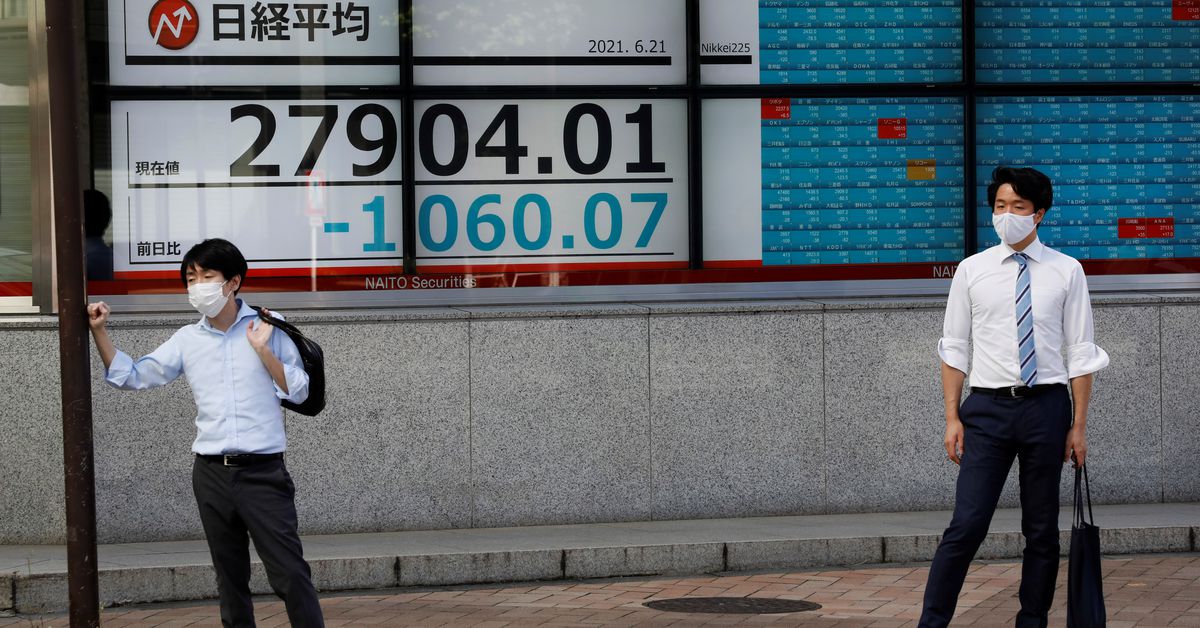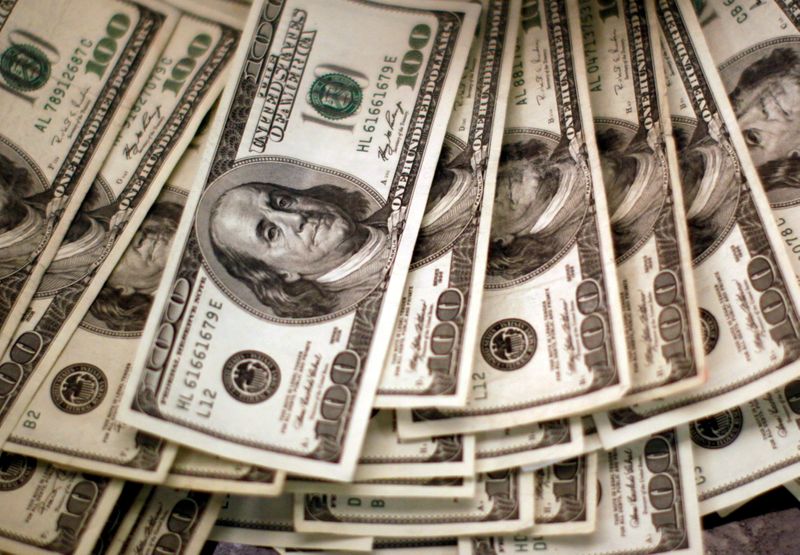WORLDWIDE: HEADLINES
Farm Belt lawmakers push for biofuel investment and tax credits in new bills

Billions of dollars in federal investments and tax credits to boost demand for U.S. biofuels will be part of two bills that Democratic lawmakers will introduce to the U.S. Congress, two sources familiar with the plans said.
Congress members from rural states will introduce bills in coming weeks seeking federal funds to add more high-biofuel blend pumps at retail stations and tax credits for automakers that put more “flex-fuel” vehicles on the road.
President Joe Biden was expected to give an update on Monday on whether the White House will accept a pared-down infrastructure bill negotiated by bipartisan group of lawmakers. If that happens, the sources said, the biofuels bills could be rolled into a massive spending bill with economic priorities Biden omitted from the infrastructure talks. Democrats and the White House hope the spending bill will pass along party lines this fall in a process called reconciliation.
The biofuels industry, including Archer Daniels Midland and Renewable Energy Group among others, is under pressure as the administration mulls cutting biofuel mandates to help U.S. oil refiners deal with rising regulatory costs.
Farm Belt Democrats including Senator Amy Klobuchar of Minnesota and Representatives Cheri Bustos of Illinois and Cindy Axne of Iowa are leading the charge to support biofuels, sources said. These lawmakers often chide their party for paying too little attention to rural communities.
The lawmakers plan to seek $2 billion in funding to pay for new fuel pumps and other infrastructure for providing higher biofuel blends like ethanol and biodiesel. They are seeking a 5-cent-per-gallon tax credit for gas stations offering so-called E15, which is gasoline that contains 15% ethanol.
They also are seeking a $200 per car tax credit for automakers that make “flex fuel” vehicles that can run on virtually any blend of gasoline or ethanol.
Slim majorities in the House and Senate will embolden Democratic lawmakers to fight for pet projects and regional demands, in exchange for supporting the major spending plan. Congressional aides and White House officials have warned that those regional and special interests could swell the spending bill and complicate efforts to move ahead on a party-line vote.
Full coverage: REUTERS
Fed officials open debate on bond taper

The debate over when and how the Federal Reserve could begin to reduce some of its massive stimulus for the economy was on full display on Monday, as two U.S. central bank officials explained their support for an earlier withdrawal and a third said any change was still quite a ways away.
The conversation over the future of the Fed’s $120 billion in monthly bond purchases is just beginning, and is expected to be a central topic when Fed Chair Jerome Powell appears on Tuesday before the U.S. House of Representatives Select Subcommittee on the Coronavirus Crisis.
In prepared testimony released late on Monday, Powell said the U.S. economy continues to show “sustained improvement” and forecast further job market gains and a decline in inflation from current elevated levels, but he did not say anything about the taper debate.
But earlier in the day, St. Louis Fed President James Bullard and Dallas Fed President Robert Kaplan laid out some of the major questions Fed officials will have to grapple with as they work through an early test of the central bank’s new strategic framework at a time when inflation is coming in strong and the labor market recovery is weaker than expected.
“Creating optionality for the committee will be really useful and that will be part of the taper debate as we think about how much signaling we are doing about future rate policy,” Bullard said during a virtual event organized by the Official Monetary and Financial Institutions Forum and the Philadelphia Fed.
Policymakers will need to bring inflation gently down to the Fed’s 2% goal, he said, and now, with the pandemic on the decline, is clearly the time to open the debate over the Fed’s bond-buying program.
Speaking on the same panel, Kaplan noted his concerns with a frothy housing market and the potential for easy policy to feed “excesses and imbalances.”
“I’ve been more of a fan of doing some things maybe to take our foot gently off the accelerator sooner rather than later so that we can manage these risks” and make it more likely that the Fed will be able to “avoid having to press the brakes down the road,” Kaplan said.
Full coverage: REUTERS
WORLDWIDE: FINANCE / MARKETS
Stocks bounce from 4-week lows, dollar pulls back

Global shares extended their recovery on Tuesday, with Asian markets bouncing from four-weeks lows as investor focus on economic growth partly offset worries about any near-term rise in U.S. interest rates.
The early momentum in the region was supported by a rally on Wall Street, with the Dow registering its strongest session in more than three months.
MSCI’s broadest index of Asia-Pacific shares outside Japan (.MIAPJ0000PUS) rose 0.35%, moving above Monday’s four-week lows and notching a 4% gain so far this year.
Japanese shares led the way, with the Nikkei (.N225) advancing 2.1%. South Korea (.KS11) stocks rose 0.4%, Australia (.AXJO) was up 1.2% and Chinese stocks (.SSEC) advanced 0.6%
Last week’s surprise hawkish shift by the U.S. Federal Reserve sent global stock markets skidding as traders brought forward expectations for interest rate increases.
The Fed’s pivot toward starting policy normalization discussions was driven by rapidly rising inflation, a dynamic that has kept financial markets on edge in the past few months.
“We view the meeting as an initial step of a shift in Fed rhetoric as the central bank continues to catch up with stronger than expected growth and inflation indicators, and the Fed’s inflation forecasts remain well below our projections,” JPMorgan strategists said in a note.
On Monday, Fed officials including as St. Louis Fed President James Bullard and Dallas Fed President Robert Kaplan toned down their hawkish rhetoric.
Overnight, Wall Street was led higher by shares of banks and energy firms. The Dow Jones Industrial Average (.DJI) rose 1.76% the S&P 500 (.SPX) gained 1.40% and the Nasdaq Composite (.IXIC) added 0.79%.
Full coverage: REUTERS
Dollar catches breath as traders await Powell testimony

The dollar paused for breath on Tuesday as traders looked to testimony from U.S. Federal Reserve chair Jerome Powell for guidance, after a surprise shift in the central bank’s policy outlook.
The greenback has gained sharply since the Fed last week flagged sooner-than-expected interest rate hikes, but dipped on Monday to hand back a little bit of that rise.
Against the euro , the dollar nursed an overnight loss of about 0.4% to steady around $1.1909. It held at 110.31 yen , and the dollar index was steady at 91.915 after a loss of about 0.5% on Monday.
The Australian and New Zealand dollars eased – after snapping losing streaks on Monday – with the Aussie down 0.2% to $0.7527 and the kiwi down 0.15% to $0.6978.
“We’ve had a meaningful shift (at the Fed) from a longtime dovish stance to now a slightly hawkish one,” said Westpac currency analyst Imre Speizer.
“We’ve had a bit of a positioning cleanout – the whole world was mega short the U.S. dollar, and that’s in good part probably been cleaned out already – and now we take a wee breath before the next move up,” he said.
Over the next few weeks, the Aussie dollar could drop to around 74 cents and the kiwi to around 68 cents, he said, before they both might recover as the U.S. dollar charts a “raggedy” rise on the back of a strong U.S. pandemic recovery.
In the medium term, investors will be keenly focused on the U.S. labor market as its performance is likely to have an influence on the Fed’s attitude. In the nearer future, all eyes are on Powell who appears before Congress from 1800 GMT.
In prepared remarks he noted sustained labor market improvement and the recent increase in inflation.
On Monday hawkish Fed officials such as St. Louis Fed President James Bullard and Dallas Fed President Robert Kaplan offered toned-down rhetoric.
New York Fed President John Williams said it was too soon to shift policy, and that he expects inflation to ease from about 3% this year to close to 2% in 2022 and 2023 – which is something markets are not so sure about.
Full coverage: REUTERS
Oil falls but sentiment stays strong on demand recovery hopes

Crude dropped on Tuesday as investors cashed in on a recent rally, but market sentiment remained solid on hopes for a quick recovery in oil demand in the U.S. and European markets and fading expectations for an early return of Iranian crude.
Brent crude futures for August eased 10 cents, or 0.1%, to $74.80 a barrel by 0110 GMT, while U.S. West Texas Intermediate (WTI) crude for July was at $73.44 a barrel, down 22 cents, or 0.3%. WTI for August fell 15 cents, or 0.2%, to 72.97 a barrel.
Brent gained 1.9% and WTI jumped 2.8% on Monday.
Both benchmarks have risen for the past four weeks on optimism over the pace of global COVID-19 vaccinations and expected pick-up in summer travel. The rebound has pushed up spot premiums for crude in Asia and Europe to multi-month highs.
“Oil prices took a breather, but the markets’ tone remains firm amid expectations that fuel demand will pick up quickly along with economic recovery in Europe and the United States,” said Toshitaka Tazawa, analyst at commodities broker Fujitomi Co.
BofA Global Research raised its Brent crude price forecasts for this year and next, saying that tighter oil supply and recovering demand could push oil briefly to $100 per barrel in 2022.
Investors are focusing on weekly U.S. inventory data, Fujitomi Co’s Tazawa said, as crude oil stockpiles have fallen for a fourth consecutive week.
The Energy Information Administration said last week that U.S. crude oil stockpiles dropped sharply in the week to June 11 as refineries boosted operations to their highest since January 2020, signaling continued improvement in demand.
U.S. crude stocks were expected to drop for the fifth consecutive week, while distillate and gasoline were seen rising last week, a preliminary Reuters poll showed on Monday.
Full coverage: REUTERS